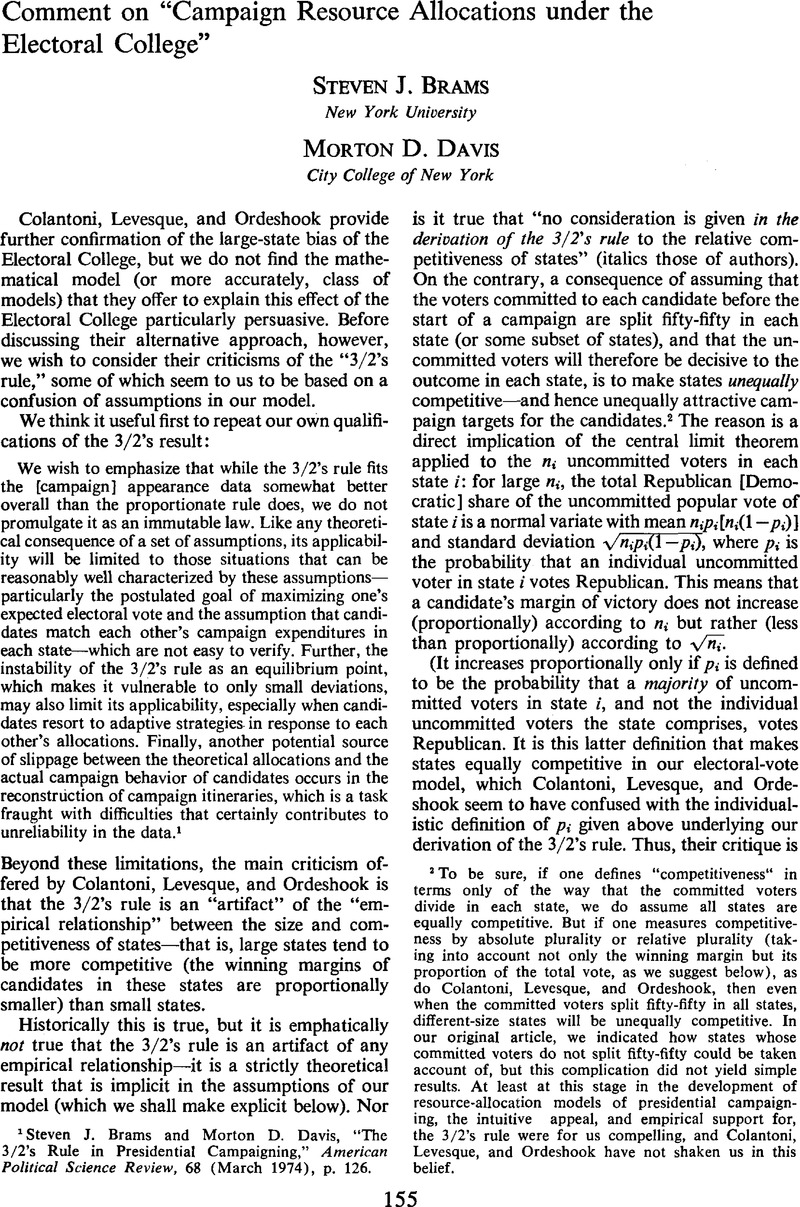Article contents
Comment on “Campaign Resource Allocations under the Electoral College”
Published online by Cambridge University Press: 01 August 2014
Abstract

- Type
- Articles
- Information
- Copyright
- Copyright © American Political Science Association 1975
References
1 Brams, Steven J. and Davis, Morton D., “The 3/2's Rule in Presidential Campaigning,” American Political Science Review, 68 (March 1974), p. 126CrossRefGoogle Scholar.
2 To be sure, if one defines “competitiveness” in terms only of the way that the committed voters divide in each state, we do assume all states are equally competitive. But if one measures competitiveness by absolute plurality or relative plurality (taking into account not only the winning margin but its proportion of the total vote, as we suggest below), as do Colantoni, Levesque, and Ordeshook, then even when the committed voters split fifty-fifty in all states, different-size states will be unequally competitive. In our original article, we indicated how states whose committed voters do not split fifty-fifty could be taken account of, but this complication did not yield simple results. At least at this stage in the development of resource-allocation models of presidential campaigning, the intuitive appeal, and empirical support for, the 3/2's rule were for us compelling, and Colantoni, Levesque, and Ordeshook have not shaken us in this belief.
3 In fairness to our critics, they seem to recognize this to be the problem when they say (p. 144) that “the 3/2's rule should not be tested against a proportional rule unadjusted for competitiveness”—and then proceed to test an adjusted rule—but this statement is difficult to reconcile with the statements quoted above implying that the 3/2's rule also ignores the relative competitiveness of states. In any event, we believe that the simplest and most natural “adjustment” for competitiveness is the definition of pi we gave above, which, given the assumptions of our model, yields the 3/2's result. By way of comparison, we shudder at the complexity and ad hoc quality of the statistical model used to derive estimates of competitiveness in Table 5 of Colantoni, Levesque and Ordeshook.
4 Brams, Steven J. and Davis, Morton D., “Models of Resource Allocation in Presidential Campaigning: Implications for Democratic Representation,” in Annals of the New York Academy of Sciences, Democratic Representation and Apportionment: Quantitative Methods, Measures and Criteria, ed. Papayanopoulos, L., 219 (New York: New York Academy of Sciences, 1973), 105–123, esp. 118–121Google Scholar
- 10
- Cited by





Comments
No Comments have been published for this article.